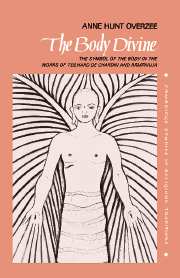Book contents
- Frontmatter
- Contents
- Preface
- List of abbreviations
- Introduction
- PART I
- PART II
- 5 Functions of the divine body in Rāmānuja and Teilhard de Chardin
- 6 The divine body as model of the integration of consciousness
- 7 The divine body as model for the transformation of consciousness
- 8 The body divine: paradigm of a conscious cosmos
- Appendix I Composition and publication dates of papers by Teilhard de Chardin cited in this work
- Appendix II Teilhard de Chardin on the Mass
- Glossary of Indian terms
- Notes
- Select bibliography
- Index
7 - The divine body as model for the transformation of consciousness
Published online by Cambridge University Press: 11 December 2009
- Frontmatter
- Contents
- Preface
- List of abbreviations
- Introduction
- PART I
- PART II
- 5 Functions of the divine body in Rāmānuja and Teilhard de Chardin
- 6 The divine body as model of the integration of consciousness
- 7 The divine body as model for the transformation of consciousness
- 8 The body divine: paradigm of a conscious cosmos
- Appendix I Composition and publication dates of papers by Teilhard de Chardin cited in this work
- Appendix II Teilhard de Chardin on the Mass
- Glossary of Indian terms
- Notes
- Select bibliography
- Index
Summary
I have shown how Rāmānuja and Teilhard de Chardin, in presenting their visions of the world, have drawn upon rich symbolic understandings inherent in their respective traditions. Representations of the Lord whose body is the world date back to the earliest recorded literature associated with Vedic and early Christian traditions. Whether we accept theories of universal symbols or archetypes or not, clearly this notion is deeply imprinted in both eastern and western consciousness.
One reason why certain symbols reappear in different times and cultures is quite simply their ‘workability’. If a religious symbol is prevalent, it works well for people. By this I mean that it has transformative power. Patrick Sherry claims that religious concepts often involve reference to spiritual transformation; but it is symbols that can provide the means to attain that transformation. Even if we have a map of where we are, showing us where we want to go (in other words, a model), we still need the means to get there. Symbols provide such means of transport; they are vehicles for transformation.
Perhaps the symbol of the divine body is of key significance in the works of both Teilhard and Rāmānuja because for them it has been proved to work.
- Type
- Chapter
- Information
- The Body DivineThe Symbol of the Body in the Works of Teilhard de Chardin and Ramanuja, pp. 125 - 145Publisher: Cambridge University PressPrint publication year: 1991

